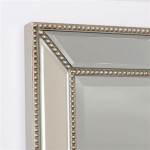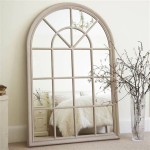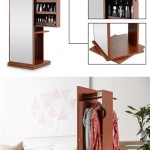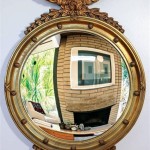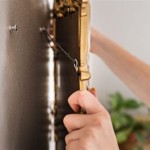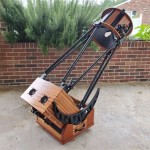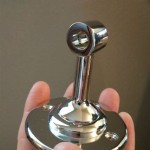Antique Arts and Crafts Mirrors
Antique Arts and Crafts mirrors represent a significant category within the broader Arts and Crafts movement, a decorative and fine arts style flourishing between 1880 and 1920. Characterized by a rejection of mass-produced Victorian-era ornamentation in favor of handcrafted simplicity and honest materials, these mirrors offer a unique glimpse into the design philosophies of the period. Their enduring appeal stems from both their aesthetic qualities and the historical context they embody.
The Arts and Crafts movement championed a philosophy of functionalism, believing that objects should be both beautiful and useful. This principle extended to mirrors, which were viewed as essential household items. While functionality remained paramount, Arts and Crafts designers elevated the mirror from a mere utilitarian object to a work of art, emphasizing quality materials and handcrafted construction.
One of the defining features of Arts and Crafts mirrors is the emphasis on natural materials. Oak, particularly quarter-sawn oak with its distinctive ray fleck pattern, was a favored choice for frames. Other woods like walnut, mahogany, and cherry were also employed, often left with a natural finish or stained to enhance the wood's inherent beauty. The use of these natural materials contributed to the overall handcrafted and organic aesthetic valued by the movement.
The frames of Arts and Crafts mirrors often incorporate handcrafted details that further distinguish them. Simple, geometric shapes were prominent, reflecting the movement's emphasis on clean lines and uncluttered design. Common decorative elements included stylized floral motifs, inlaid wood or metal accents, and hand-hammered copper or brass details. These embellishments, while present, were always restrained and integrated harmoniously into the overall design.
The influence of prominent figures within the Arts and Crafts movement, such as Gustav Stickley and William Morris, is evident in many antique mirrors from the period. Stickley's straightforward, rectilinear designs are reflected in the simple, geometric frames often found on Mission-style mirrors. Morris's embrace of natural forms and traditional craftsmanship is evident in mirrors featuring stylized floral motifs and intricate wood carving.
Beyond the prominent names, numerous smaller workshops and individual artisans produced Arts and Crafts mirrors, resulting in a diverse range of styles and interpretations. Regional variations also existed. For example, mirrors produced in the American Midwest often incorporated more rectilinear designs, while those from the East Coast sometimes displayed more elaborate detailing.
Identifying an authentic antique Arts and Crafts mirror requires careful examination. Look for evidence of handcraftsmanship, such as tool marks, slight imperfections, and variations in the wood grain. The type of wood used, the construction techniques employed, and the style of ornamentation can all offer clues to a mirror’s authenticity and age.
The condition of an antique Arts and Crafts mirror is a significant factor in its value. Mirrors with original glass and frames in good condition, showing minimal signs of wear and tear, are highly desirable. While some collectors appreciate the patina of age, significant damage, such as extensive cracking in the frame or a heavily deteriorated silvering on the mirror, can detract from its value.
Collecting antique Arts and Crafts mirrors offers a tangible connection to a significant period in design history. These mirrors represent not only beautiful decorative objects but also embody the Arts and Crafts movement's enduring principles of craftsmanship, simplicity, and the appreciation of natural beauty. They add a touch of history and artistry to any interior.
The value of antique Arts and Crafts mirrors can vary considerably depending on several factors. The maker, the rarity of the design, the condition of the mirror, and the presence of any unique features all contribute to its overall worth. Mirrors by prominent makers or from well-known workshops generally command higher prices. Similarly, mirrors with rare or unusual designs, especially those exhibiting exemplary craftsmanship, are highly sought after by collectors.
Caring for antique Arts and Crafts mirrors requires attention to their specific needs. Avoid harsh cleaning chemicals, which can damage the delicate finish of the wood or the silvering on the glass. Dusting with a soft cloth is generally sufficient for regular cleaning. If a deeper cleaning is necessary, consult a professional specializing in antique furniture restoration to ensure the mirror is cleaned safely and effectively without causing further damage.
Displaying antique Arts and Crafts mirrors can enhance the aesthetic of a variety of interior design styles. They complement not only Arts and Crafts interiors but also blend seamlessly with other styles that appreciate handcrafted objects and natural materials, such as Mission, Bungalow, and even contemporary spaces seeking a touch of historical charm. Their timeless appeal allows them to integrate effortlessly into diverse settings.

Swedish Arts And Crafts Hand Carved Oak Mirror With Monkey Birds For At 1stdibs Overmantle Mirrors Craft Vintage

Arts Crafts Brass Repoussé Mirror Rough Old Glass

Liberty Arts And Crafts Copper Mirror C1900 S Antiques To Buy

Genuine Antique Arts Crafts Copper Mirror Circa 1900

Scottish Arts Crafts Large Copper Mirror

Arts And Crafts Mirrors

150 Arts And Crafts Mirrors Antiques Ideas In 2024

Mirrors

Antiques Atlas Arts And Crafts Brass Erfly Mirror As342a067 261ls

Arts Crafts Overmantle Mirror C1900 Antiques To Buy

